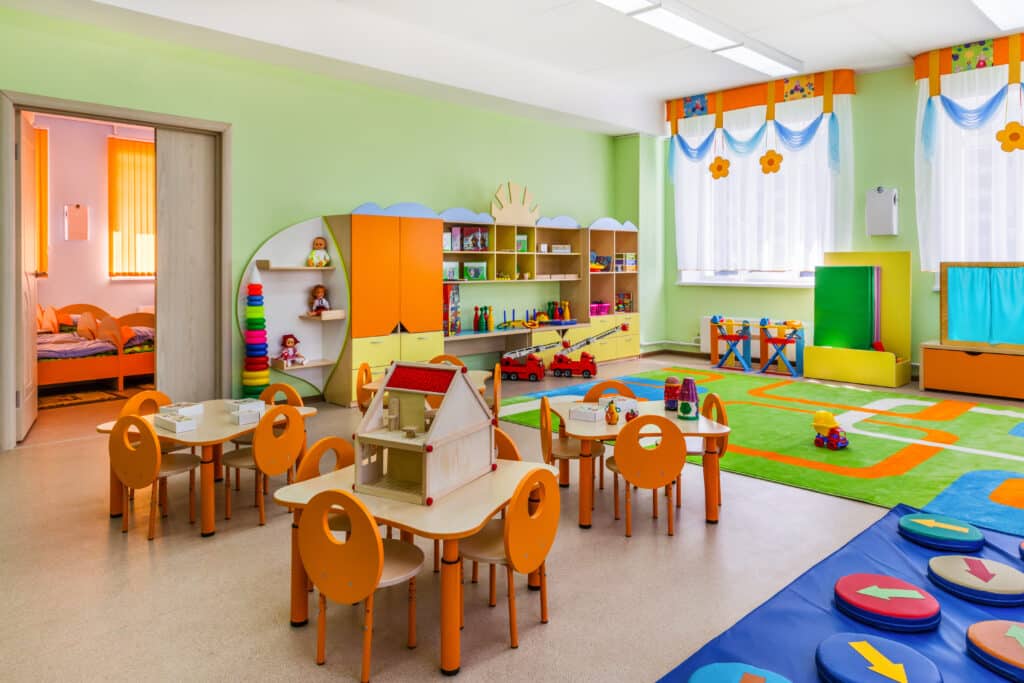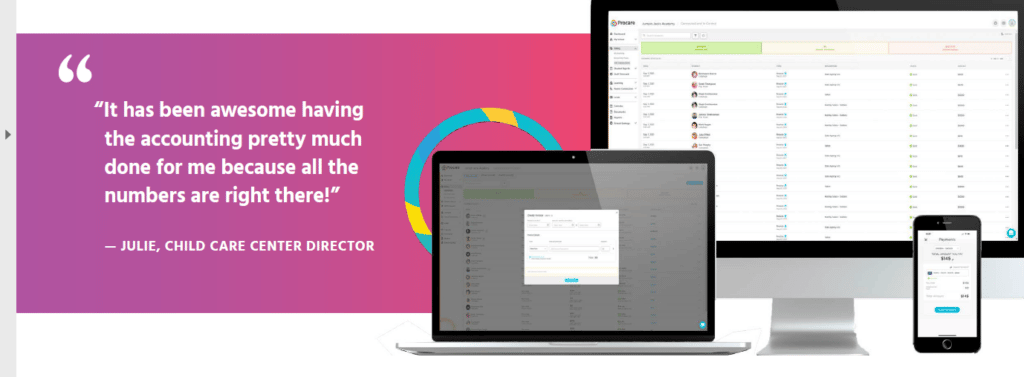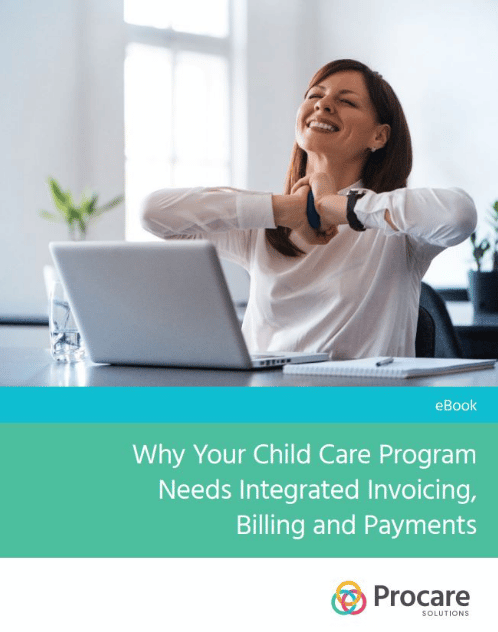
This blog was originally posted on Jan. 25, 2021, and was updated on Sept. 28, 2022, with new information.
Creating a detailed child care center budget plan by carefully accounting for all of your planned expenses is vital to the success of your child care center.
If you’ve never done budgeting before, the process might seem intimidating at first — but don’t worry, we’ve got you covered.
In this article, you’ll learn the basics of budgeting for your child care center, why it’s important and how to craft your own child care center budget plan. We’ll also highlight the most important items that should be included in your plan to help make sure you don’t miss anything.
Let’s dive in!
What is a Child Care Center Budget Plan?
A budget can be defined simply as a plan to spend your money.
Budget plans can be categorized broadly into two types: business and personal.
A personal budget is a plan for spending your own money in a way that meets your needs and those of your family. A personal budget might include allowances for housing, food, clothing, entertainment and other needs.
A business budget is a plan for spending money to achieve business objectives, such as developing a new service and providing that service to customers. In this case, your child care center budget could serve as a spending plan for:
- Starting your own child care center operation
- Attracting your first child care customers
- Delivering child care services to your customers in compliance with local regulations and quality standards
Because every child care center is unique, you will need to create a budget plan based on the specific circumstances of your business. These circumstances include your physical location or jurisdiction, the intended size of your center, whether you plan to have employees, how you will manage your center, the activities you wish to provide, and other details.
Why You Need a Child Care Center Budget Plan
Creating your own child care center budget plan is a necessary step towards opening and operating your own center.
Creating a child care center budget plan will help you:
- Understand the steps you must take to successfully launch your child care center, from inception to opening day and beyond
- Anticipate and prepare for the various types of expenses you will incur as you prepare to open your center
- Quantify the resources required for a successful launch of your business
- Ensure that you have sufficient operating capital to sustain your business in the short term while you work to increase enrollment
- Secure investment or financing to help launch your business, if needed
If you need to secure funding from a financial institution to start your child care center, you will need to create a business plan outlining how you will spend the money and how you plan to repay it in the future. Your budget is an important part of that business plan, as it demonstrates your understanding of business needs and their related costs to any potential investors or financiers.
Crafting Your Budget Plan: Understanding Costs

As you develop your child care budget plan, you’ll need to research and document the various expenses and costs associated with owning and operating a child care center.
Before we get started, let’s quickly review some types of expenses you’ll need to understand.
Capital Expenses Versus Operating Expenses
Operating expenses are ongoing costs related to the daily functioning of your child care center. A capital expense is the purchase of an asset that will benefit your child care center over time. If you purchase an oven for cooking meals, that’s a capital cost — but your monthly gas bill for using the oven would be an operating cost.
Fixed Costs Versus Variable Costs
Operating expenses can include both fixed costs and variable costs.
Fixed costs are expenses that remain constant from month to month, while variable costs change in proportion to your business activities.
One example of a fixed cost is your monthly internet bill. It costs the same regardless of how many kids are enrolled in your programs. On the other hand, meals are considered a variable cost. If you have more kids enrolled at your center, you’ll need to spend more to provide more meals.
Note that while your internet bill is a fixed cost and meals are a variable cost, both are examples of operating expenses.
Understanding these different types of expenses will help you estimate costs more accurately as you develop your child care budget plan.
Crafting Your Budget Plan: What to Include
Now let’s go deeper into how to craft a child care budget plan for your center to identify the most important items that should be included in your child care budget. For each item, we’ll give a basic overview, highlight which type of cost it is, and provide our best guidance on how to effectively budget for the item.
Child Care Licensing Costs
Overview: Many jurisdictions require child care providers or center operators to hold a valid license. In many cases, the license must be renewed each year to remain compliant with local regulations.
Cost Type: Operating expense — variable cost.
How to Budget: Child care licensing fees can vary depending on the size of your center and the number of children in your care. You can contact the child care licensing authority in your area to learn more about annual licensing costs and estimate what the cost will be for you.
Legal and Accounting Costs
Overview: As you launch your child care center, you may require legal assistance to incorporate your business or develop contracts for suppliers, employees, or customers. You may also wish to deal with an accountant who can keep your books organized, manage payroll, and provide tax services.
Cost Type: Depends.
How to Budget: Incorporating your business and developing contracts at the outset are capital costs, but ongoing legal and accounting services would be considered an operating cost. Legal and accounting costs will vary based on the scale and complexity of your business. To get the best deal, write down exactly what you need help with and request a price quote from multiple service providers.
Facility & Renovation Costs
Overview: Before you can open a child care center, you’ll need to find an appropriate space in a suitable location. You may also need to conduct renovations before you can open to ensure the space meets your needs.
Cost Type: Capital expense.
How to Budget: Facility and renovation costs can vary substantially. If you’re starting a child care operation in your own home, your costs will be low. If you’re purchasing or renting a commercial property and renovating it to accommodate your business, your costs will be high. You can discover potential locations by reviewing local listings for commercial real estate. Try to find a location in a densely populated, residential area, near a school, and that requires minimal renovation.
Insurance
Overview: Daycare insurance can protect your business against liability for injuries to children in your care, property damage resulting from your business, and other potential sources of liability. There’s also professional liability insurance that shields you against claims that you made a mistake or provided improper care.
Cost Type: Operating expense — variable cost.
How to Budget: Insurance costs range from $400 a year to more than $4,000, depending on the location and size of your child care business. Contact multiple insurance companies for quotes to ensure you get a competitive rate. You may be asked to provide details about your operation before receiving an accurate quote, so it could be useful to have most of your budgeting and planning done by the time you go looking for insurance.
Furniture and Equipment

Overview: Tables, chairs, carpets, sofas, desks, shelves, an oven, a refrigerator/freezer and a microwave are all essential items in this category.
Cost Type: Capital expense.
How to Budget: Draw out the floor plan of your child care center and think carefully about the furniture and equipment you’ll need to make the most of the space. Create a shopping list of the items you’ll need and budget individually for each item. You can always save money on furniture items by thrifting or purchasing at a discount.
Child Care Supplies
Overview: Child care supplies are the toys, books, games and other educational materials that you’ll need to keep kids entertained and support learning outcomes.
Cost Type: Operating expense — variable cost.
How to Budget: Before you open your child care center, you’ll need to stock up on child care supplies for the kids in your care. Once you get up and running, you’ll need to allocate some of your monthly budget to purchasing new supplies or replacing old ones. Create an itemized list of supplies you’ll need by listing out the activities you plan to offer. Art supplies, sporting equipment, stationery, and educational toys all belong in this category.
Utilities
Overview: Utility costs are your monthly costs for electricity, natural gas, water, internet and garbage disposal/recycling services.
Cost Type: Operating expense — variable cost.
How to Budget: Some utility costs depend on the size of your child care space. Having more space will increase your heating/cooling costs and having more rooms will increase your electricity costs. Water costs and garbage disposal will vary depending on the number of kids you care for at your facility. Your Internet bill is a fixed monthly operating expense. To budget accurately for utilities, you’ll need to conduct research on typical rates for each utility in your area.
Meals and Snacks
Overview: As a child care operator, you’ll need to provide meals and snacks for the kids in your care.
Cost Type: Operating expense — variable cost.

How to Budget: Budgeting for meals and snacks is fairly simple. Start by taking a look at the child care nutrition requirements for your area, then design a weekly menu based on those requirements. Finally, head to the grocery store and determine the total cost of that menu on a per-child, per-week basis.
Employee Salaries
Overview: If you plan to run a center-based care facility, you’ll need to hire additional employees to help service your customers. You’ll definitely need to hire child care providers and you may also need to hire janitorial staff, reception staff or administrative staff.
Cost Type: Operating expense — variable cost.
How to Budget: Anticipate how many employees and which roles you will need depending on the anticipated size of your center. You can use online resources to discover average salary information for these roles in your area.
Marketing Costs
Overview: To secure enrollments and start generating revenue, you’ll need a strategy for marketing your child care center. Marketing costs are all the costs associated with getting the word out about your new business and acquiring customers.
Cost Type: Operating expense — fixed cost.
How to Budget: Start thinking about how you will market your center to parents in your area. You can try networking with local schools, distributing flyers in the community, or even advertising online. You can do this yourself or hire someone else to help. Once you develop a plan, it should be easier to determine how much that plan will cost to implement on a per-month basis.
Technology
Overview: Your technology budget should include the software and hardware solutions needed to digitize your center. Child care management software from Procare Solutions makes it easy to manage enrollment, attendance, billing and payments through a digital interface. To fully leverage digital child care solutions, you’ll need a computer for the administrator’s office and at least one tablet for each classroom.
Cost Type: Depends.
How to Budget: Computing equipment is a capital expense, while child care management software is a fixed operating expense. The best way to save money on a computer for your center is to purchase one that meets or slightly exceeds the system requirements for child care management software.
Other Costs
Overview: Can you anticipate any costs that weren’t covered on this list? Be sure to include them in your child care budget plan!
Cost Type: Depends.
How to Budget: Every child care center is unique, with its own location, staff, programming and customers. As a result, you shouldn’t be surprised to encounter costs that are not covered on this list. You should review your budget plan regularly and update it with any new expenses you incur while operating your center.
Crafting a Child Care Budget Plan: Bringing it All Together

Once you’ve gathered data and information on all of your anticipated costs, create a simple spreadsheet for your budget plan.
Try to keep your list organized in categories, just like the 12 categories above. For each category, create an itemized list of what exactly you intend to purchase and how much you expect it will cost.
Remember that your budget plan is a living document, so feel free to make changes to it as your projections change, or whenever you manage to save money by getting a great deal.
Finally, use your child care budget plan to secure financing or investment for your business, optimize your spending, understand your operating costs, and determine how many enrollments you need to start earning a profit.
Boost Efficiency and Lower Your Costs with Procare Solutions

You need a software system that simplifies paying bills, tracking expenses as well as handling budgeting and overall financial reporting while making profitable business decisions based on revenue flow.
There’s no need to stress about administrative tasks with Procare Solutions’ all-in-one platform designed to meet the unique needs of child care providers!
With Procare, you can:
• Maintain a record of your vendors, payment terms and standard expense categories including
classroom supplies, maintenance, utilities and rent
• Establish a budget, enter beginning balances, select a fiscal year and reconcile your checkbook
• Make journal entries for expenses like bank fees or track credit card purchases
• Keep your child care center and parents in sync with balances that update instantly
• Access year-end tax statements that are available for download by staff or parents
• Get a real-time view of all center financials and receivables in the an integrated dashboard showing tuition charges and balances, as well as multi-family billing options and fee transparency
Procare Solutions helps you streamline and automate child care administration, lowering your operating costs and making your center more profitable and easier to run.
Convenient automated payments make it easier to collect tuition from parents, establish predictable cash flows and to ensure your operating costs are covered every month.
Ready to learn more about why Procare Solutions should be at the top of your child care budget plan?
Request a Demo
Request a demo and talk with one of our friendly Procare experts to get a tailored child care solution for the unique needs of your business.




